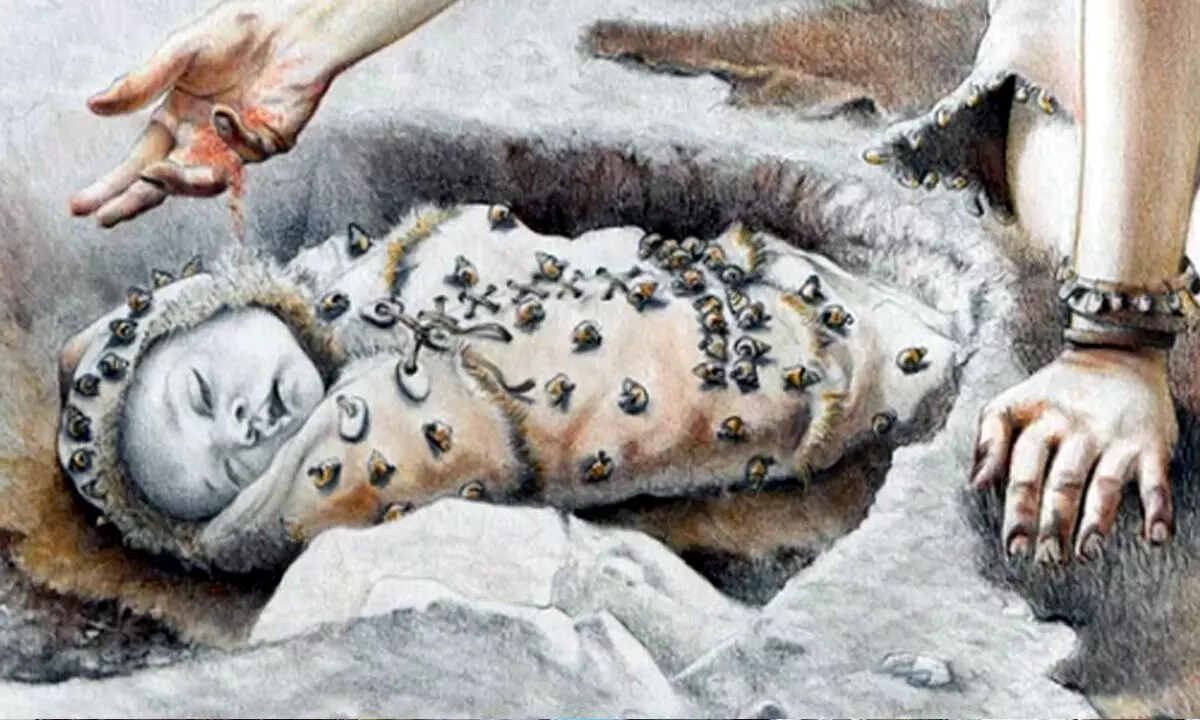Live
- Indian telecom industry’s revenue doubled in 5 years, Bharti Airtel biggest gainer
- Complete retaining wall works on war footing: Ministers
- Singham Again Now Streaming on This Platform: Check Details Here
- ACB records statement of complainant in Formula-E race case
- Chandrababu pays tribute to Atal Bihari Vajpayee on 100th anniversary
- Political equations in TN likely to shift after PMK's offer to DMK
- Bellary dist records 23 maternal deaths in 8 months
- Christmas in the air: Rome of the East at its festive best
- Garena Free Fire Max Redeem Codes & Exclusive Rewards – December 25, 2024
- Belagavi glows celebrating centenary of historic Congress session
Just In
Archaeologists Discovered Ancient Burial Of Young Girl Babies Of 10,000 Years Ago

Hans News Service | 30 Sept 2022 10:30 PM IST

x
Highlights
- According to a recent analysis of an exceedingly unusual newborn burial in Europe, humans may have been using slings to transport their children as early as 10,000 years ago.
- The infant was then given the name "Neve," and based on her teeth, it appears that she is the oldest female child buried in Europe.
According to a recent analysis of an exceedingly unusual newborn burial in Europe, humans may have been using slings to transport their children as early as 10,000 years ago. Although there is little to no archaeological evidence of infant carriers in the fossil record, the findings support the theory that they were commonly used in prehistoric periods.
In 2017, experts found the burial in Italy's Arma Veirana cave. The infant was then given the name "Neve," and based on her teeth, it appears that she is the oldest female child buried in Europe. Neve was notable because her community buried her with a significant amount of beads, indicating that they valued and adored her.
Neve was likely carried by adults during her brief life while being wrapped in a sling decorated with shells, according to a recent investigation of the grave's contents and the child's position. Although the wrap is no longer present, the way the shells around Neve are perforated suggests that someone once strung the shells together and sewn them on to fabric, fur, or hide.
Neve's beads were previously studied in 2017 and it was determined that it takes hours to create them. It would not have been a hasty decision to bury the ornaments.
These components might have made a sling or served as a blanket or undergarment.All three possibilities are plausible, but the team behind this latest investigation, lead by anthropologist Claudine Gravel-Miguel of Arizona State University, believes the infant carrier option is most feasible due to a few factors.
Gravel-Miguel and colleagues believe these decorations were not intended as burial ornaments, placed on top of a grave, because the infant's legs are pulled up over the tummy, hiding many of the shells.
They were most likely a "piece of a decorative garment or baby sling that was probably utilised during the infant's life," instead. Some of the shell beads are even curled, probably mimicking the shape of the long-lost wrap, around the child's upper arm bone.
A close examination of the shells reveals that they are well-used and may have been in use for much longer than the 40 to 50 days that this youngster lived.
Neve is buried with more than 70 perforated shells and four perforated bivalve pendants, which appear to be unique to this site. Other burial sites on the Italian peninsula rarely contain more than 40 perforated shells each. Researchers have been able to establish probable ornament use patterns in relation to Neve's posture because to the large number of seashells that were buried with her.

Next Story
More Stories
ADVERTISEMENT
© 2024 Hyderabad Media House Limited/The Hans India. All rights reserved. Powered by hocalwire.com






